Once again, it is the Nexus time of the year. This time, Google has left the Gingerbread cookies and, together with Samsung, has brought to us the Galaxy Nexus to deliver the Ice Cream Sandwich. And while a cold dessert is totally out of place this holiday season, the latest release of Android is more relevant than ever.
The Galaxy Nexus packs an impressive spec sheet, but it is (yet again) the OS which is the device’s main highlight. After all, Android 4.0 Ice Cream Sandwich is widely expected to put an end to the fragmentation, which currently plagues Google’s mobile platform.
Unlike its Nexus S predecessor, which was essentially a rebranded Samsung Galaxy S, the Samsung Galaxy Nexus is a completely different device from the current flagship of the company, the I9100 Galaxy S II. The latest Google phone sports a different GPU and chipset, which are, well, not as powerful as those found inside the Galaxy S II.
Here is a quick look at what the Samsung Galaxy Nexus has to offer, along with its main disadvantages.
Key features
- Quad-band GSM; penta-band 3G support
- HSDPA 21Mbps; HSUPA 5.76Mbps
- Android 4.0 Ice Cream Sandwich OS with stock UI
- 4.65” Super AMOLED capacitive touchscreen with HD (720 x 1280 pixels) resolution; 16M colors; oleophobic surface
- Slim profile at 8.9mm
- Dual-core 1.2GHz Cortex-A9 CPU; PowerVR SGX540 GPU; TI OMAP 4460 chipset
- 16/32GB built-in storage; 1GB RAM
- 5 MP camera (2592x1936 pixels) with autofocus, LED flash; 1.3MP front-facing unit
- 1080p video recording @30fps; touch-to-zoom while recording
- Wi-Fi 802.11 a/b/g/n
- DLNA; Wi-Fi hotspot
- Bluetooth 3.0 with ADP
- Charging MHL microUSB port with TV-out (1080p) support
- GPS receiver with A-GPS support
- NFC connectivity
- Accelerometer, gyro and proximity sensors; compass; barometer
- Back cover made of Hyper Skin material for increased grip
- Excellent audio quality
Main disadvantages
- Camera resolution is not on par with the rest of the high-end dual-core competition
- Below average battery life
- Lacks a dedicated camera key
- No microSD card slot
- No mass-storage mode (some files don't show up in MTP mode)
- Android 4.0 Ice Cream Sandwich is yet to be fully compatible with all apps from the Android Market
- No FM radio
A quick look at the key features of the Samsung Galaxy Nexus will show you that the smartphone’s hottest hardware feature is its Super AMOLED screen with HD resolution – a first for a Samsung smartphone. The display combines amazing contrast ratio and superb viewing angles, with eye-popping size and resolution – a perfect match for the spanking new OS on board.
As far as the rest of the hardware is concerned, we heavily suspect that Samsung has intentionally omitted a couple of Galaxy S II features such as the microSD card slot and a superior 8MP camera unit. The superior screen of the Galaxy Nexus, while giving it a touch of exclusivity hardware-wise, will not be enough to cannibalize the strong sales, which the I9100 still enjoys.
The latest Google phone will be aimed at the Android purists – the crowd, which doesn’t like launchers or UI tweaks. And also the crowd that likes to get the latest OS updates from Google first. In this aspect, the smartphone is entirely in a league of its own.
So is the Samsung Galaxy Nexus a proper flagship for the company, or is it simply an Android 4.0 Ice Cream Sandwich flag bearer for Google? This is what we’re trying to find out in this review.
We are going to continue next with an unboxing of the smartphone, followed by design and build quality inspection.
he Android Market has several scrollable tabs - categories, featured, top paid, top free, top grossing, top new paid, top new free and trending. Actually, this is where the tabbed-UI trend in Android started.
Other than that, the Market is almost exactly the same as it is on Gingerbread (the only difference is that there's an on-screen Menu key at the top right corner). We weren’t big fans of the interface change, but it finally feels at home with Ice Cream Sandwich.
When downloading an application useful info on the app, like rating and comments along with the info, screenshots and demo videos by the developers. Before confirming the download, the Market will show you a screen of permissions required by the application.
There are all kinds of apps in the Android market and the most important ones are covered (file managers, navigation apps, document readers etc.).
You should have access to all of them - the ones not updated for ICS will run with that tiny Menu key cramped in the bottom right, but that's not a deal-breaker.
Conclusion
Google didn’t disappoint with the execution of Android Ice Cream Sandwich and Samsung did an excellent job with the hardware of the Galaxy Nexus.
It's probably only the second Nexus phone (after the Nexus One) that is really attractive to customers at large, rather than mostly to developers.
A new major version of Android is not the only first to its name, the Samsung Galaxy Nexus is also the first globally available droid phone with a 720p screen. And what a screen it is - the 316ppi pixel density makes for an amazing image sharpness and completely hides the PenTile nature of the matrix.
Top-notch connectivity is also a big plus and the browser is hands down the most capable mobile browser currently available.
The camera resolution is the one department where the Galaxy Nexus falls short of the competition, potentially being a potential deal-breaker but we can assure you the Galaxy Nexus produces some excellent quality photos and videos.
You can always go for a Samsung I9100 Galaxy S II for a better camera and but at the cost of screen size and resolution. Some variations of the S II like the Skyrocket i727 for AT&T or S II for T-Mobile have bigger screens (though not higher resolution). The Skyrocket has LTE too. The Samsung Galaxy S II HD LTE has the same screen as the Galaxy Nexus and LTE, but it's a hard model to come by.
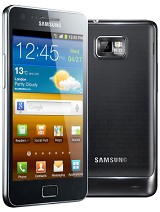
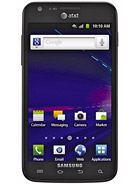
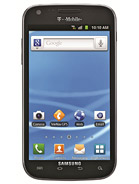
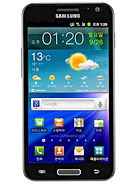
Samsung I9100 Galaxy S II • Samsung Galaxy S II Skyrocket i727 • Samsung Galaxy S II T-Mobile • Samsung Galaxy S II HD LTE
You don't have to look to Samsung for a good AMOLED though - the Motorola RAZR XT910 has a 4.3" SuperAMOLED screen with qHD resolution. The HTC Sensation XE uses an LCD screen, but it focuses on audiophiles anyway, with its iBeats headset.
US droid users can choose from the LG Nitro HD for AT&T (which has a 4.5" 720p AH-IPS LCD and is available for Bell Canada as the Optimus 4G LTE) and the HTC Rezound from Verizon (4.3" 720p S-LCD screen, and it’s a CDMA + LTE model just like the Verizon’s Galaxy Nexus).
If size is no issue, the Samsung Galaxy Note is an interesting offering - its SuperAMOLED screen measures 5.3" and has an even higher resolution (800x1280). Then there's the more powerful chipset, the better camera and the S Pen.
Note that none of these have Android Ice Cream Sandwich yet. In fact, no other phone has it - some of them will be getting it at some point sooner or later, but you can't have it now.
Finding an alternative to the Samsung Galaxy Nexus is proving tough, especially if you live outside the US or South Korea. It's a phone that can go head to head with the current leaders and win most of the time. It will be surpassed eventually by the coming next-generation flagship droids, but it will never be a bad choice.
Thanks
Xtrmblackberry Themes











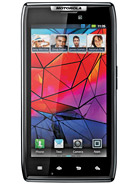
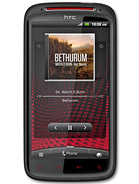
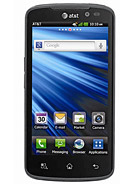
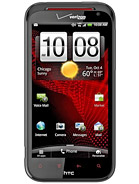
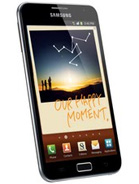


0 comments:
Post a Comment